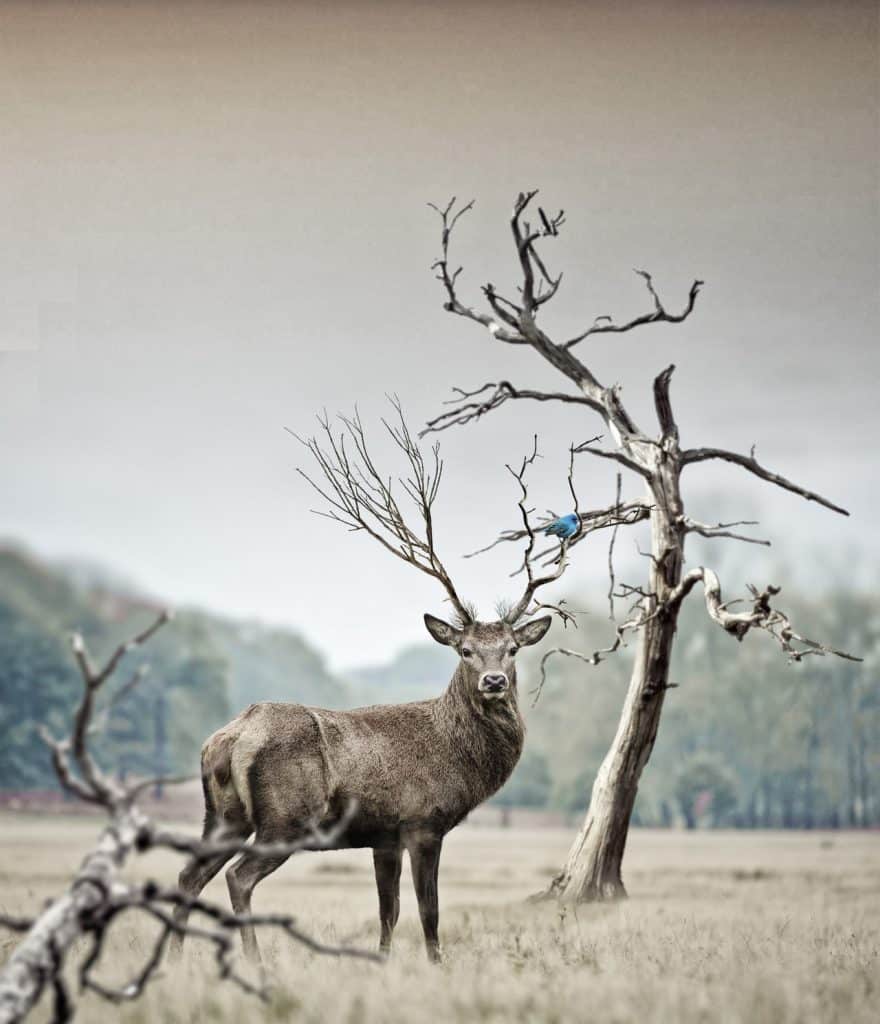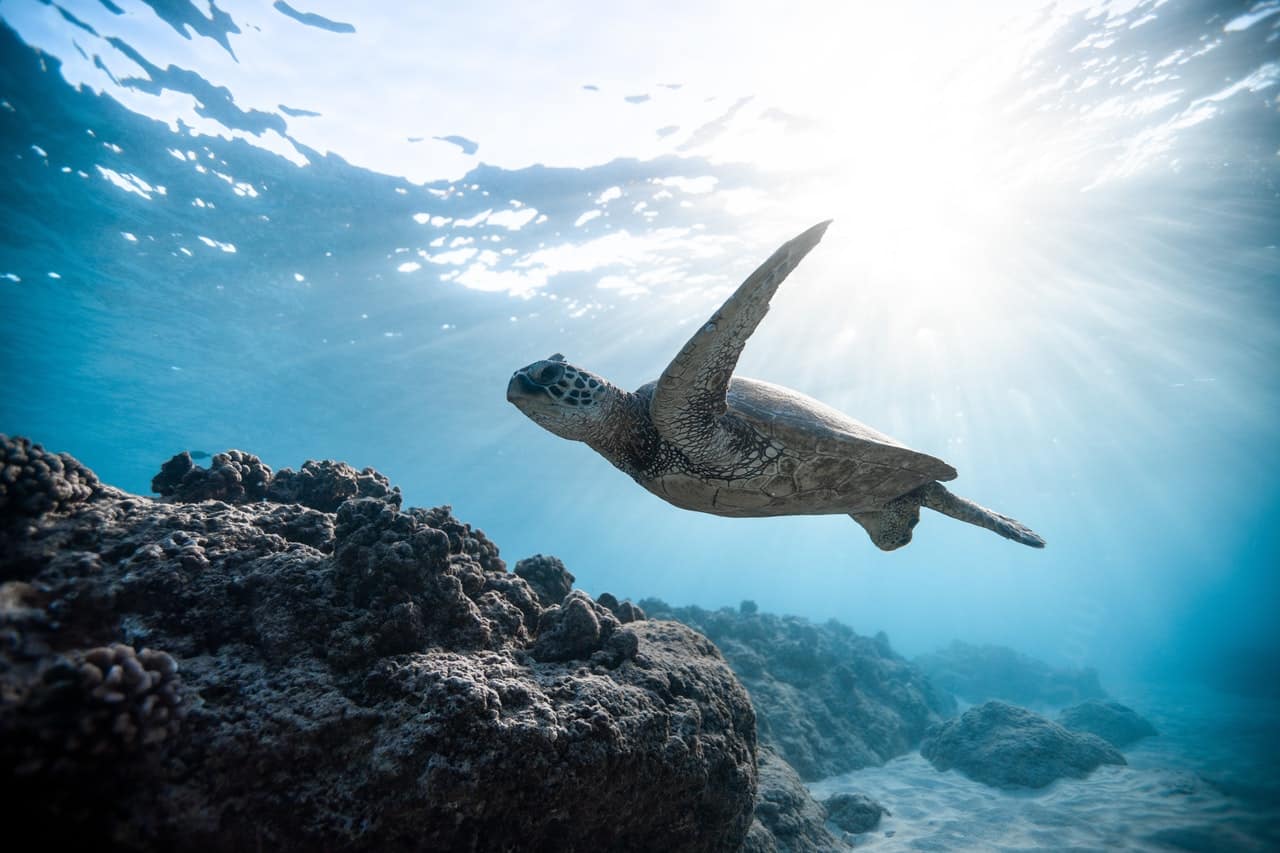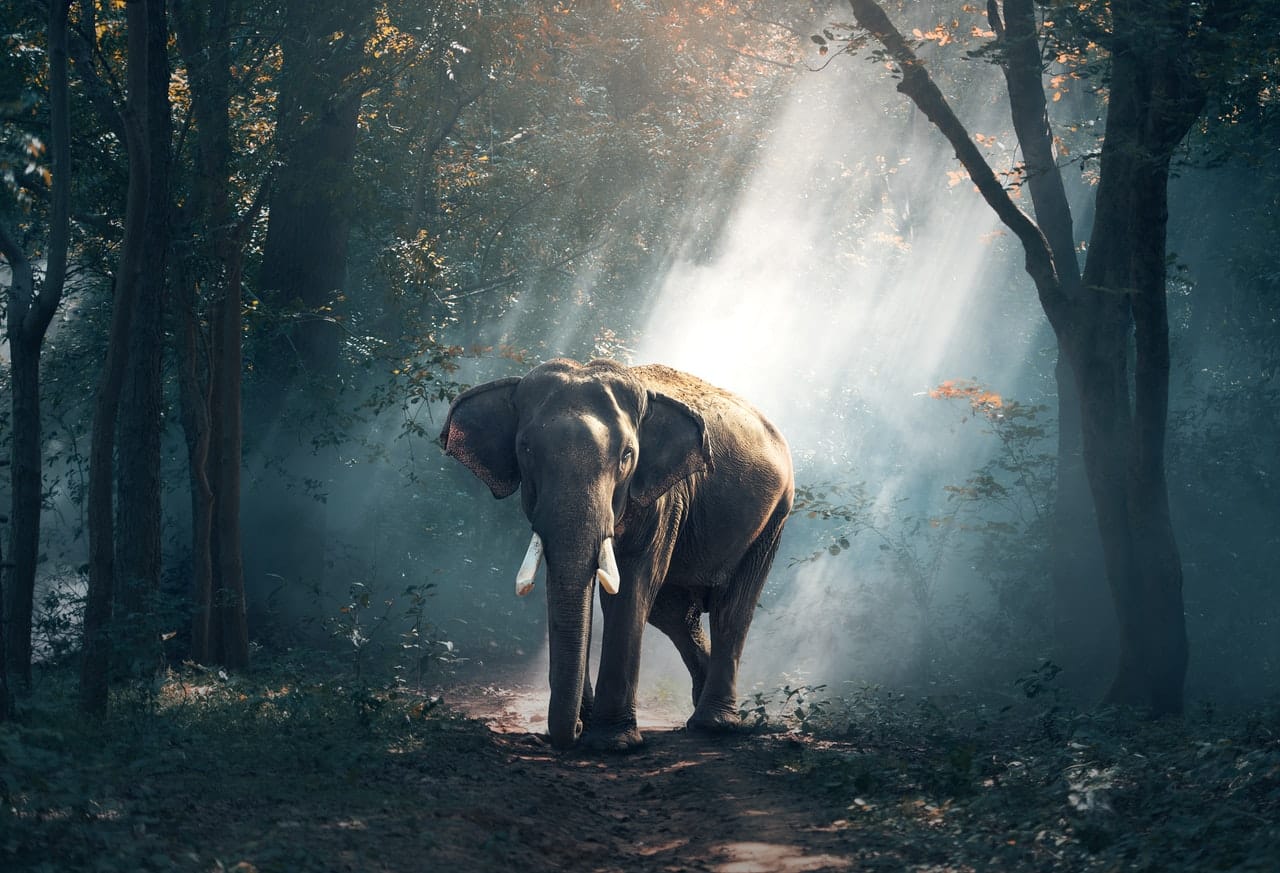The Beginner’s Guide to Wildlife Photography
What Is Wildlife Photography?
Wildlife photography captures and documents wildlife in action and in their natural habitats.

Wildlife photography requires skilled photographers to snap photos of animals in their natural environments. Many aspiring photographers are drawn to wildlife photography out of a desire to capture stunning, high-quality shots of wild animals and other species.
In this article, we’ll cover some of the most important features about wildlife photography for beginners — including how to properly define wildlife photography, some of the main approaches photographers can take when capturing animal subjects, which equipment is recommended for photographing wildlife, and how wildlife photographers can make a profit as they grow their business or brand.
What Is Wildlife Photography?
Wildlife photography is a popular genre that involves photographing animals in their natural habitat. There are many types of animals that fall into this category. While some wildlife photographers specialize in certain species or types of animals, others prefer to photograph subjects they encounter in their environment.
Depending on their chosen subjects, wildlife photographers are often required to travel extensively — though depending on their location, some photographers find ways to shoot animals in their backyards or closer to their homes. In all cases, a successful wildlife photographer will need to work within sites where they’re most likely to find animals in action or doing interesting things.
Wildlife photography is popular for a myriad of reasons — one of the biggest being that it allows photographers to make aspects of the wilderness accessible for everyone’s viewing pleasure. Wildlife images can be breathtaking, captivating, and show areas of animal activity that we may never be fortunate enough to see in the flesh.
Popular wildlife photography outlets many of us are familiar with include National Geographic, Smithsonian, BBC Wildlife, Planet Earth, and many more.
What Are Some of the Main Types of Wildlife Photography?
When it comes to shooting wild animals, different photography types can help you land the ultimate captures that your viewers will love. The three main types of wildlife photography you’ll usually see in publications are:
Mammal Photography
Mammals are probably what come to most people’s minds when they envision a wildlife photograph. Common mammal subjects in wildlife photos include bears, wolves, deer, bison, elk, tigers, lions, elephants, and many, many more.
Because wild animals generally avoid humans, viewing most mammals in their natural habitat can be difficult. This is what makes successful mammal photography so captivating. Many wildlife photographers use a zoom lens, fast shutter speed, and high ISO to capture animals. Timing is also important when photographing large mammals. Some photographers try to shoot during the golden hour, when the sun is directly overhead of their animal subjects. This improves the light angle and makes the photos more inviting.
Bird Photography
Our habitats are filled with animals above us — particularly birds. Some of the most majestic shots found in wildlife photography are of birds in flight or circling around clouds, mountaintops, and other complementary landscapes.
With so many different species of birds available worldwide, bird photography is an especially popular niche within the greater wildlife photography community — with many photographers fully committed to this field. However, because birds are small and fast, the priciest equipment is usually needed to capture the best shots.
Underwater Photography
Underwater photography involves taking photographs of fish and other aquatic wildlife while underwater. Usually, photographers accomplish this while scuba diving, though other types of underwater photography can be done while swimming, snorkeling, or using remotely-operated underwater vehicles.
Most underwater photography is performed using specialized equipment, which means getting successful shots can come with a steep price point. However, underwater photography has allowed humans to experience the joys of underwater creatures that are otherwise fully unseen.

Can Wildlife Photography Be Turned Into a Good Career?
While it is widely considered one of the most competitive and demanding fields of photography, many wildlife photographers who are dedicated to building a strong portfolio can eventually succeed. Wildlife photography can be a challenging, but rewarding and meaningful career for those who enjoy animals and wildlife.
To become a skilled wildlife photographer, you will need to learn how to frame, expose, and compose images that depict animals behaving naturally in their habitat. To properly master the art of photographing wildlife can take a lot of practice, time, and money.
Ready to build your online portfolio website?
Put your wildlife photography in the spotlight with a captivating portfolio.
How Do Wildlife Photographers Make Money?
Many wildlife photographers make money from participating in organized safaris and expeditions, which provide training and opportunities for them to photograph animal subjects. However, these ventures are often expensive — especially when they involve traveling to isolated areas to photograph more elusive species.
Other ways for wildlife photographers to make money may include selling their work to stock photography companies, greeting card companies, outlets that will print their work as posters, art galleries, and/or magazines.
With strong portfolios, more seasoned wildlife photographers also may be hired as full-time employees for nature magazines or other publication platforms.
How Much Money Does a Wildlife Photographer Make?
Given that most wildlife photographers are freelance, it can be difficult to determine how much they earn on average. In many cases, wildlife photographers are involved with research studies or work alongside scientists to achieve their best shots.
However, many wildlife photographers are also hobbyists or amateurs as well. As such, some wildlife photographers can go on to have very lucrative careers, while others might make much less from a career in the profession.
The Bureau of Labor Statistics does not collect data on how much wildlife photographers earn in particular. However, according to their statistics, the average annual salary of all photographers in 2018 was $34,000 USD.
Does National Geographic Hire Photographers?
As the most internationally-known outlet for wildlife photography, National Geographic is often regarded as the gold standard in terms of work opportunities in the wildlife or nature photography niches.
While many photographers want to work for companies like National Geographic, the truth is that very few people start working for a renowned organization on a full salary. Given its reputation, many positions are also already filled by those who have been with the company for several years.
Landing a position with a top outlet can be tough, but that doesn’t mean it won’t happen one day. The best way you can kickstart your career as a wildlife photographer is by working for yourself. Most photographers and wildlife filmmakers start off working freelance and building their photography portfolio, before deciding to become a full-time member of a company.

Which Camera and Lens Are Best for Shooting Wildlife Photography?
If you’ve chosen a path in wildlife photography, selecting the right equipment will help you shoot picture-perfect wildlife shots.
However, choosing the right camera, lens and other necessary materials for shooting wild animals can be tricky — as shooting great wildlife shots includes ensuring that each component of your setup is right for your chosen animal, environment, and shooting time.
Using a Hide While Shooting Animal Subjects
In many cases, wild animals will be aware of humans when they are attempting to photograph them in their natural surroundings. To conceal your form and movement while shooting, a hide will come in handy when getting close enough to your subject to capture a clear shot.
A hide can come in many different forms — such as a tent with an opening to accommodate the camera and lens, lightweight camouflage clothing, or a vehicle with tinted windows.
Choosing the Best Camera for Wildlife Photography
First and foremost, your camera should always have the ability to shoot in RAW. This will give you far more details to play with (as opposed to JPEG), in addition to providing fewer chances that you’ll lose quality in the post-production process.
Of course, you’ll also need to shoot with a device that can accommodate various different lenses. Most wildlife photographers shoot with a DSLR or mirrorless system. These devices offer the highest amount of settings, accessories, and lens compatibility. They also enable auto-focusing, fast and continuous shooting, and high ISO options — all of which are essential for capturing rapid or moving subjects in outdoor settings.
Getting Equipped With the Best Lens for Wildlife Photography
A common choice of lens for wildlife photographers on a budget is a teleconverter. This is a small, lens-shaped object that fits comfortably between the lens and camera body. By lengthening your existing lens, a teleconverter will help you multiply the focal length of the lens you are using with it. This is a great way to capture sharper shots without having to spend the money on a telephoto lens.
While some animals are approachable, others are much harder to get close to. To successfully capture more elusive creatures, a telephoto lens is often required to get the right levels of photographic proof.
Tips on How To Get Into Wildlife Photography
Wondering how you can become a wildlife photographer and bolster your portfolio website? Here are some tips on how to become more experienced with shooting wildlife:
Know Your Subjects
The best types of wildlife images often come from photographers who are experts on the ecosystem they are shooting in, and who have acquainted themselves with the habits and behavior of the animals they choose to photograph. This includes being educated on the right times, places, and methods of capturing the best and most natural shots of their chosen subjects.
Learn Some Basics
A photo must be crisp, sharp, and detailed to compose the perfect wildlife shot. Aside from proper focus, other factors to consider are high-quality lenses, proper diffraction (not using too small an aperture), and a fast shutter speed. Online tutorials are a great way to learn the basics.
Find Your Style
Try shooting with various different lenses to see which style best suits your artistic vision. Some wildlife photographers prefer to work with subjects they can shoot up-close (such as insects), while others prefer to shoot larger species from further distances.
Be Ethical
In all cases, ensuring that all shot setups are respectful to the wildlife is paramount. Always ensure that your practices do not scare any animals or put them in harm’s way. This might mean using longer lenses to shoot certain species or refraining from tampering with their environment as much as possible.